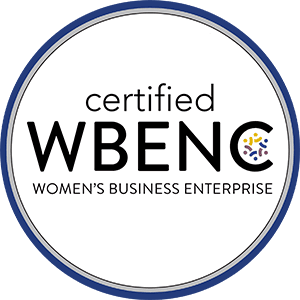5 Trends HR Leaders Should Focus on in 2022
Jan 20th, 2022
5 Trends HR Leaders Should Focus on in 2022
As we welcome in the 2022 New Year, many people are establishing new goals and creating their “new year, new me” resolution lists. As HR leaders, we need to do the same: New year, New HR trends to keep in mind! Gartner surveyed more than 500 human resources leaders across 60 countries and all major industries to identify HR trends and assess HR priorities and expected challenges for 2022. Knowing what to expect in 2022 will help HR leaders stay ahead of the curve and tackle new challenges before they arise.
HR priorities shift year to year and it is essential for the HR professional to stay on top of those expectant changes. So, what are the key trends you need to put on your 2022 resolution list?
Continued Desire for Hybrid Work
For many businesses, 2020 was the first time the words “remote work” or “work from home” were spoken. This new working environment began to shift organizational culture and drive business transformation. Hybrid work requirements continued through 2021 and many HR leaders expect hybrid work to continue to be a necessity going forward. The continued shift towards a hybrid work environment will be a massive driver of business transformation and will need to be supported.
Check out these helpful articles about implementing and successfully managing a hybrid workforce
Steps for Successfully Implementing Your Hybrid Workforce Plan (ASAE)
7 Ways to Reduce Friction Between Remote and Onsite Employees (SHRM)
How Leaders Can Thrive In A Hybrid Work Environment (FORBES)
5 Practices to Make Your Hybrid Workplace Inclusive (HBR)
Evolution of Necessary Skills
According to Gartner’s research, the total number of skills required for a single job is increasing at 6.3% annually, and new skills are replacing old ones. 29% of the skills that were present in an average job posting in 2018 will be obsolete by 2022. This means that HR leaders need to keep up to date with new and changing skills in order to attract and retain top talent.
Keep up to date with skills by:
- Reviewing job descriptions and ensuring they are up to date for current needs
- Modernize job postings and key requirements
- Review and update your organization’s training offerings to keep current employee skills up to date
Workforce Health Need Attention
The pandemic has made long-term and hard-to-reserve impacts on the workforce health and employees are asking for help. HR leaders will need to keep employee mental and physical health of employees in mind as we begin a new year.
How can HR help employees to feel happy and healthy at work?
- Leverage your Employee Assistance Programs (EAP) and make sure employees know where they can go for help if needed.
- Effectively Tackle Employee Burnout (FORBES)
- Consider virtual wellness programs for employees such as meditation or group activity challenges
Continued Need for Diversity, Equity and Inclusion Initiatives
HR leaders are seeing an increased pressure to improve equity and inclusion across all areas of an organization. Now is the time to make progress on your DEI goals and involve employees in those initiatives. Try establishing accountability by publishing a monthly DEI calendar of events or creating employee resource groups.
Review some helpful DEI practices to get you started:
How to Develop a Diversity, Equity and Inclusion Initiative (SHRM)
4 DEI Practices Your Company Should Adopt In 2022 (FORBES)
3 Actions for Leaders to Improve DEI in the Workplace (GALLUP)
Employees Want to Work at Diverse and Inclusive Organizations (HR BARTENDER)
How to Build an Effective Employee Resource Group (ERG) Program (INDEED)
Employee Appreciation
This last trend is a culmination of the above trends – employees want to feel valued, and they want to see that value in the actions of their organization. Employer - Employee relationships have suffered, and employees are making it clear that they need to be heard. Organizational leadership will need to work with HR leaders to show employee appreciation in a tangible way. Appreciation doesn’t need to be a grand expensive gesture, it could be shown in offering a virtual wellness activity, implementing flexible or hybrid work schedules, showing your commitment to DEI, or something as simple as sending out a thank you note.
Here are some helpful tips to show your appreciation:
How to Show Appreciation to Your Employees (INDEED)
13 Clever Ways To Show Appreciation For Remote Workers (FORBES)
Why It’s Important To Make Your Employees Feel Valued (BUSINESS BLOGS)







